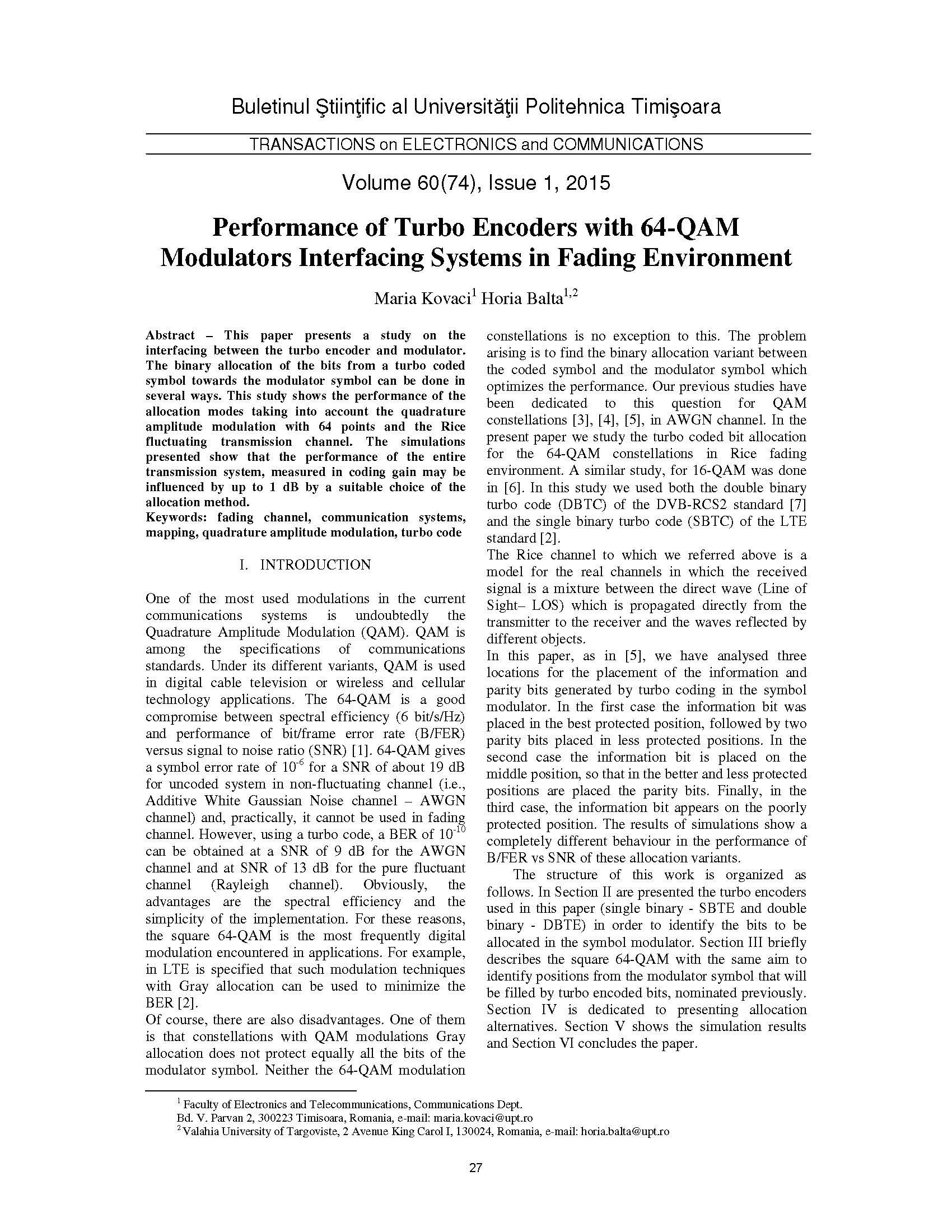Results , Publications
-

13-16 September 2015 by
Comparisons between 2D and 3D Uniform Array Antennas
For any wireless communications antenna system becomes indispensable. In this paper we analyzed linear array, planar array and three - dimensional (3D) array antennas. The array systems are simulated in Matlab based on uniform linear array antennas. Comparisons between planar array antenna and 3D array antenna are provided take into account different phases of currents ... Read More -

2015 by
The limitation of permutation polynomial interleavers for turbo codesand a scheme for dithering permutation polynomials
In this letter, partial upper bounds on minimum distance for turbo codes with permutation polynomial (PP) based interleavers over integer rings are derived using ... Read More -

17-20 August 2015 by
A study on turbo coded 16-QAM bit allocation in Rice flat fading channel
The study presented in this paper shows that the coding gain between different allocation modalities between turbo encoder and quadrature amplitude modulator with 16 signal points is over 0.6dB in fading environment. The study presents comparatively the performances obtained ... Read More -

24-27 August 2015 by
Memory 4 Triple-Binary Turbo Codes of Rate 0.6
In this paper, a triple binary turbo codes (TBTCs) family with rate 3/4 constituent convolutional codes of memory 4 is presented. With an observer canonical form implementation of component encoders, the family has over 500,000 units. In this family, we addressed the issue of selecting turbo codes. ... Read More -
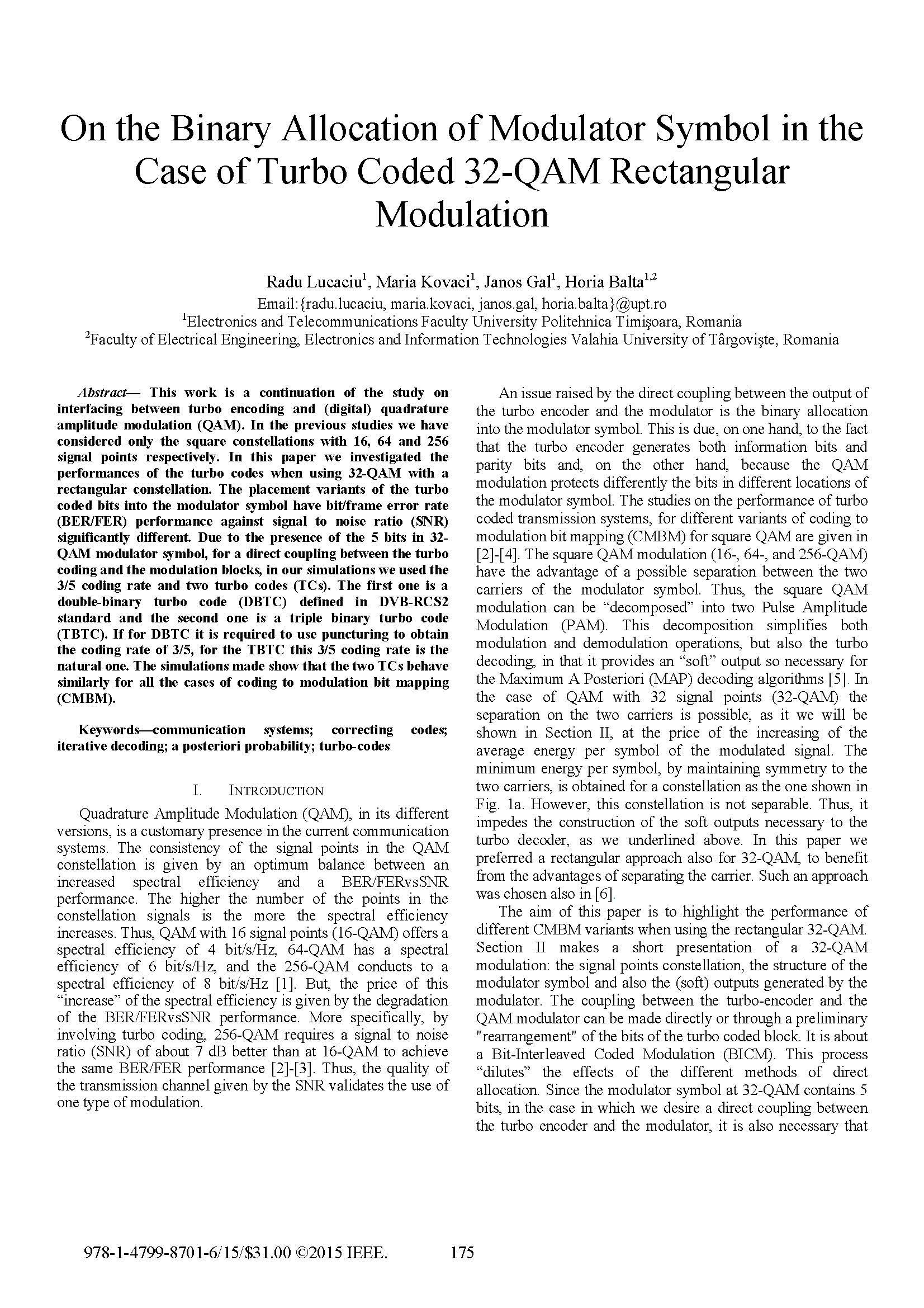
24-27 August 2015 by
On the Binary Allocation of Modulator Symbol in the Case of Turbo Coded 32-QAM Rectangular Modulation
This work is a continuation of the study on interfacing between turbo encoding and (digital) quadrature amplitude modulation (QAM). In the previous studies we have considered only the square constellations ... Read More -

9-11 July 2015 by
On the Turbo Coded Bits Allocation Mode for the 64-QAM Square Modulation
This paper presents a study on turbo coded bit allocation in the modulator symbol for square quadrature amplitude modulation with 64 signal points. The simulations have involved both single binary turbo code ... Read More -
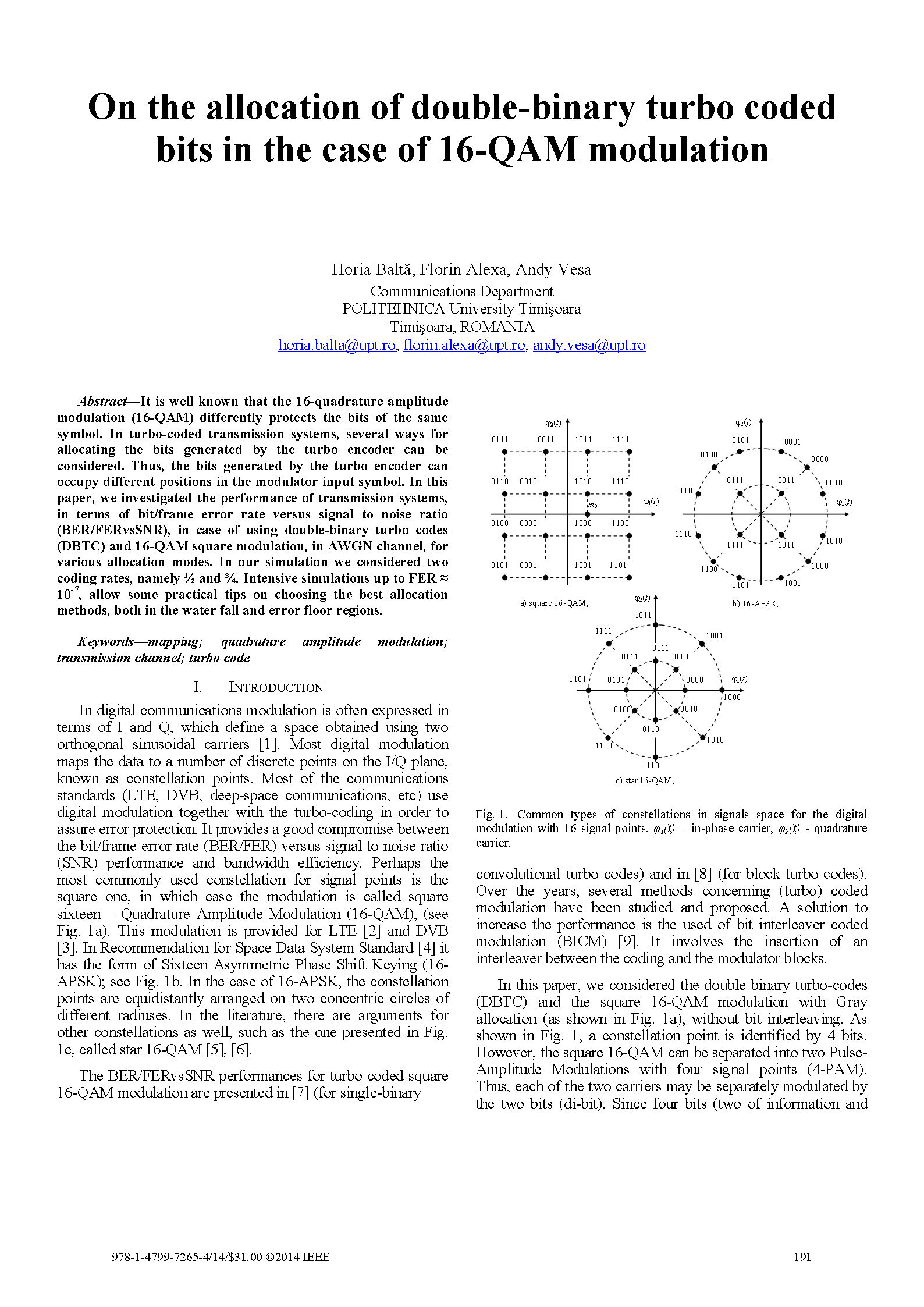
14-15 November 2014 by
On the Allocation of Double-Binary Turbo Coded Bits in the Case of 16-QAM Modulation
It is well known that the 16-quadrature amplitude modulation (16-QAM) differently protects the bits of the same symbol. In turbo-coded transmission systems, several ways for allocating the bits generated by the turbo encoder can be ... Read More -
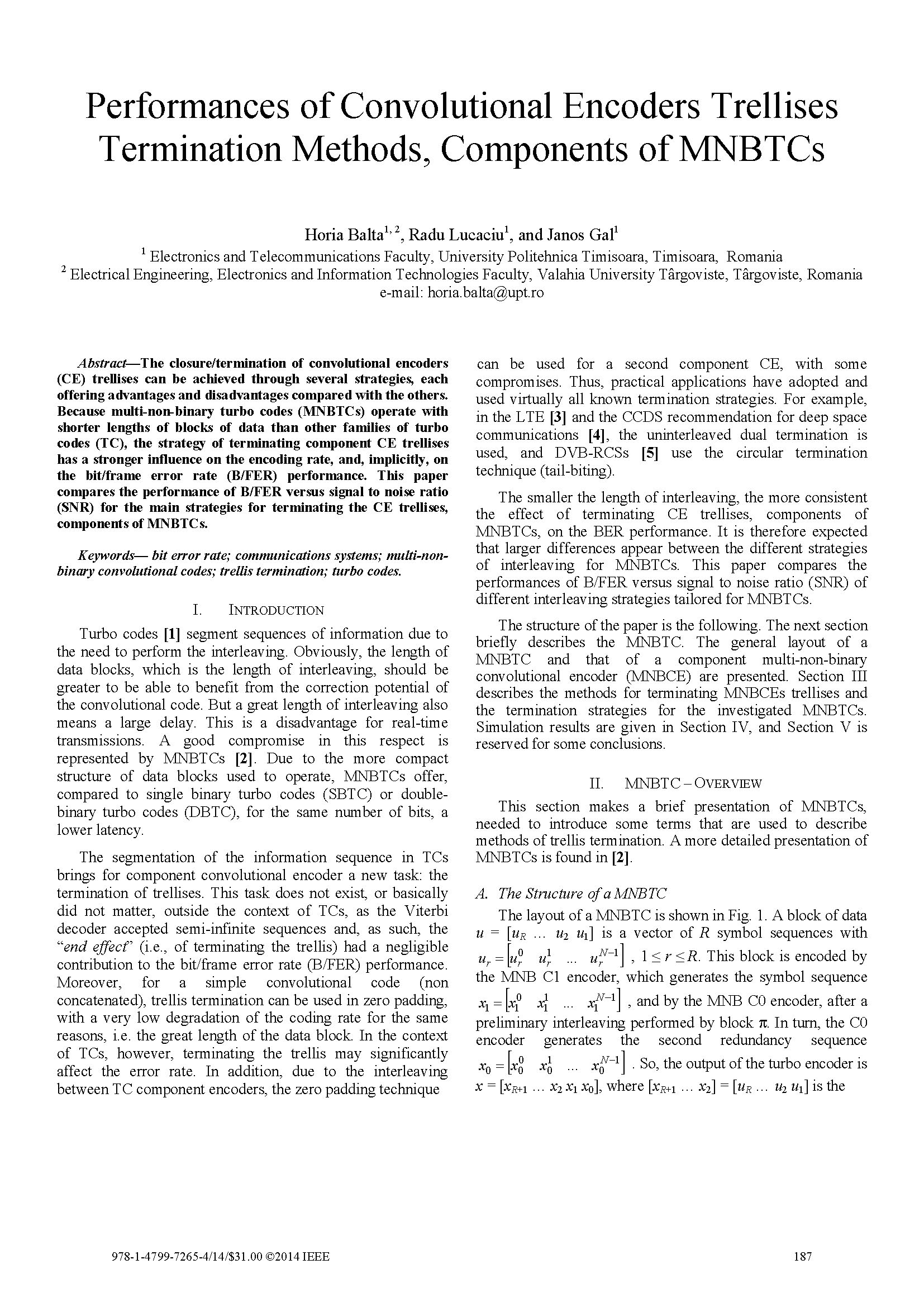
14-15 November 2014 by
Performances of Convolutional Encoders Trellises Termination Methods, Components of MNBTCs
The closure/termination of convolutional encoders (CE) trellises can be achieved through several strategies, each offering advantages and disadvantages compared with ... Read More -
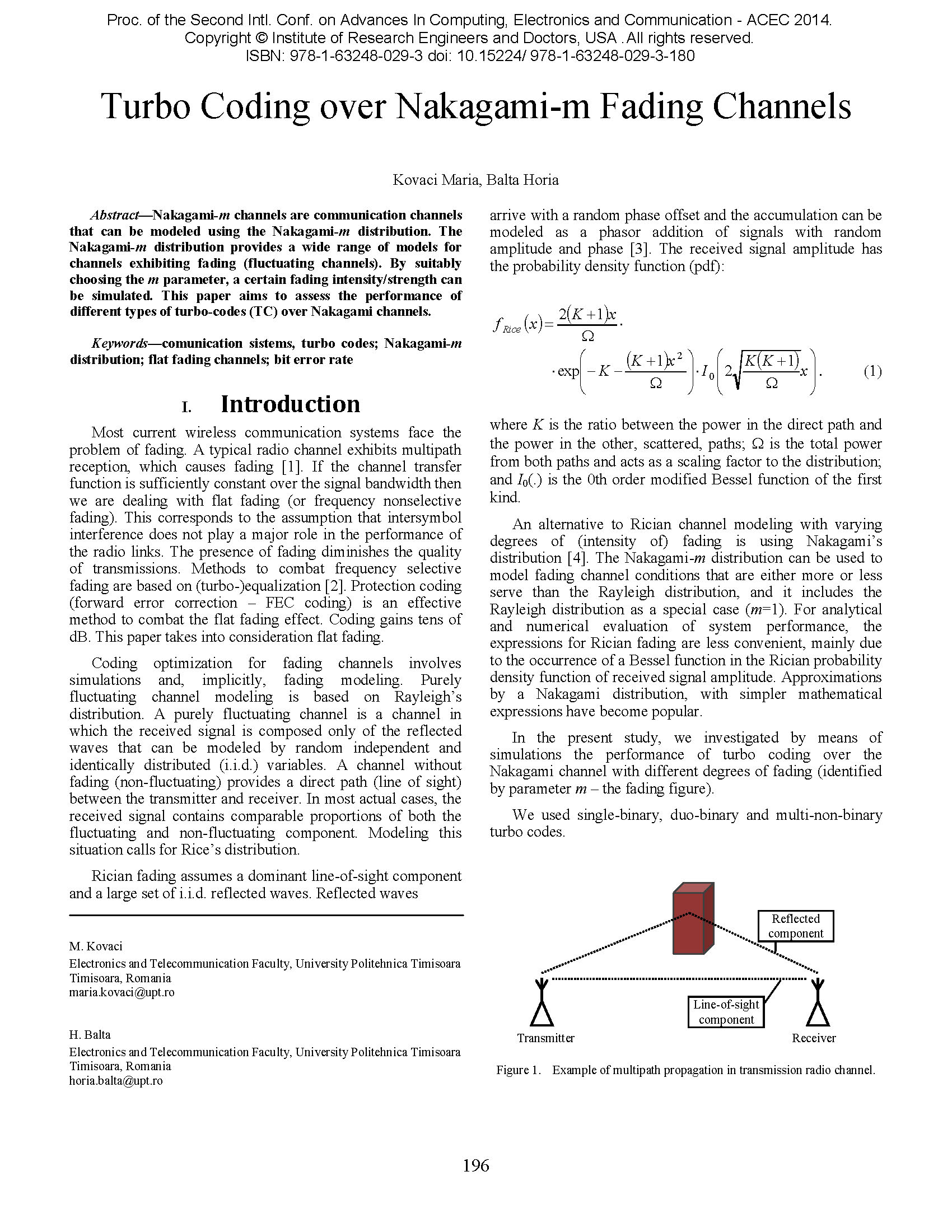
25-26 October 2014 by
Turbo Coding over Nakagami-m Fading Channels
Nakagami-m channels are communication channels that can be modeled using the Nakagami-m distribution. The Nakagami-m distribution provides a wide range of models for channels exhibiting fading (fluctuating channels). By suitably choosing the m parameter, a certain ... Read More -

2-5 September 2014 by
APP based iterations stopping criteria for MNBTC
A study of the iterations stopping criteria adapted to multi-non-binary turbo-decoders, based on the evolution of a posteriori probability density (APP) is presented. The performaces bit / frame error rate (B/FER) versus signal to noise ratio (SNR) of multi-non-binary turbo codes (MNBTC) equipped ... Read More -

1-3 July 2014 by
On the Double-Binary Turbo Coded Bits Allocation Mode in the Case of 256-QAM Square Modulation
This paper presents a study concerning the allocation possibilities of the bits generated by the double binary turbo encoder (DBTE) ... Read More -
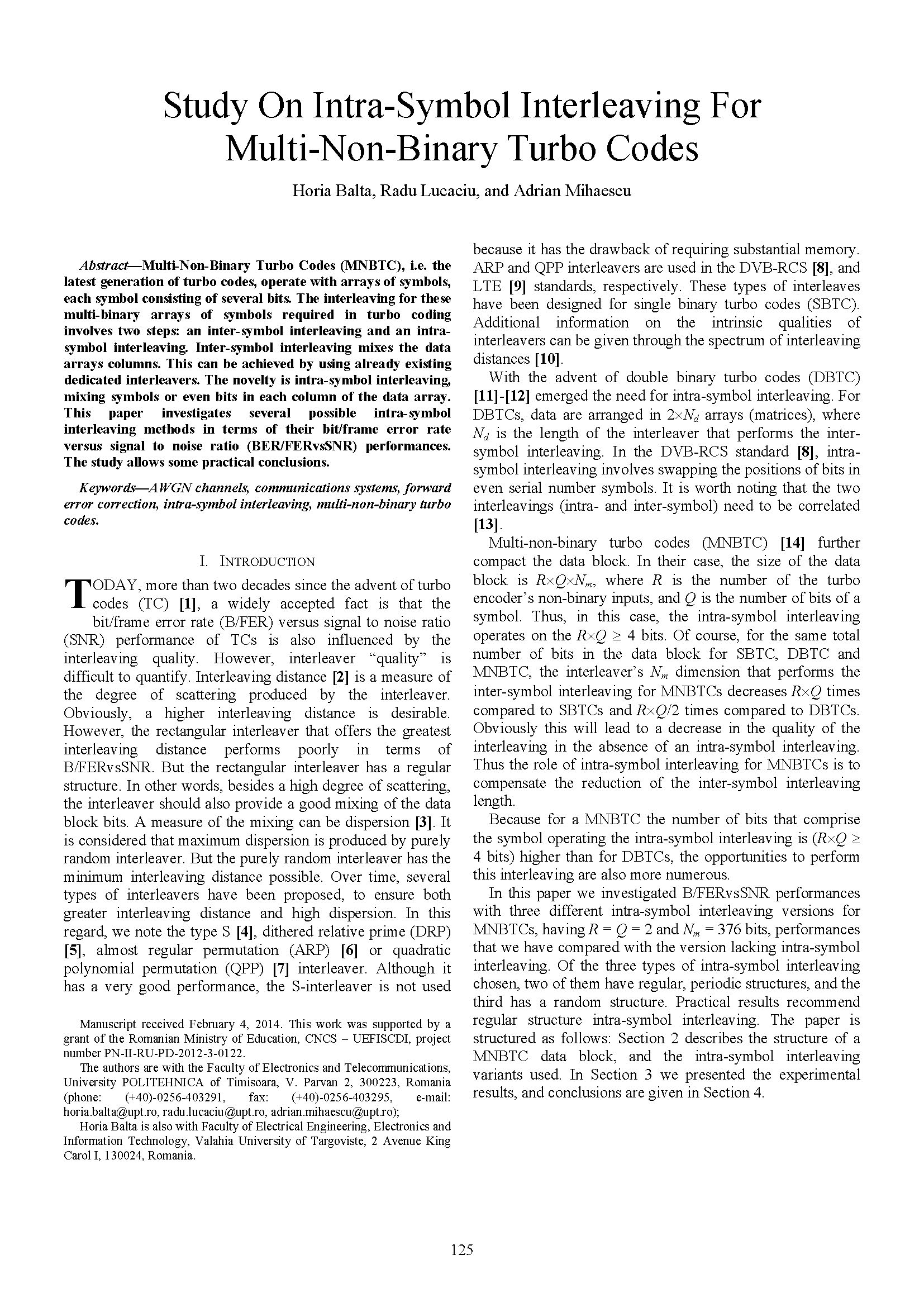
1-3 July 2014 by
Study on intra-symbol interleaving for multi-non-binary turbo codes
Multi-Non-Binary Turbo Codes (MNBTC), i.e. the latest generation of turbo codes, operate with arrays of symbols, each symbol consisting of several bits. The interleaving for these multi-binary arrays of symbols ... Read More -

18 Avril 2014 by
On the Equivalence Between Canonical Forms of Recursive Systematic Convolutional Transducers Based on Single Shift Registers
Standardized turbo codes (TCs) use recursive systematic convolutional transducers of rate b/(b + d), having a .... Read More -
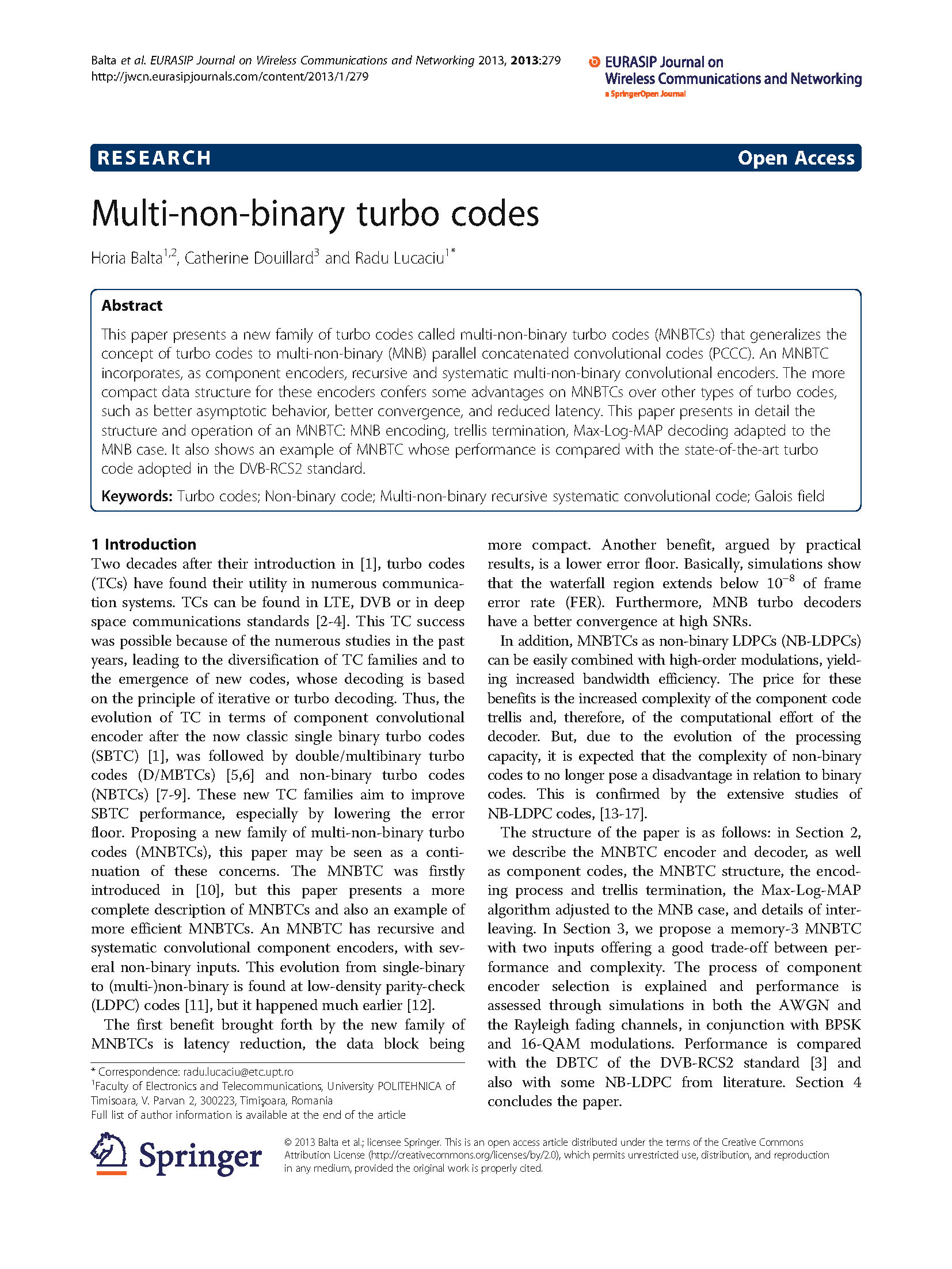
5 December 2013 by
Multi-non-binary turbo codes
This paper presents a new family of turbo codes called multi-non-binary turbo codes (MNBTCs) that generalizes the concept of turbo codes to multi-non-binary (MNB) parallel concatenated convolutional codes (PCCC).An MNBTC incorporates, as component encoders, recursive and systematic multi-non-binary convolutional encoders.The more compact data structure for these encoders ... Read More

